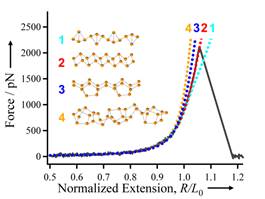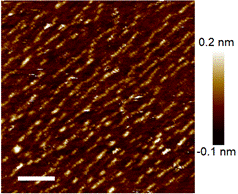Recently, Professor Shuxun Cui of the School of Mechanical Engineering reported on the latest research results of his research group in the field of inorganic polymers in the international journal Angewandte Chemie (Impact factor is 12.102).
Red phosphorus is a common element of phosphorus that has been widely used in industrial production since its discovery in 1847 (eg, safety matches, chemicals and semiconductor materials). There are five allotropes of red phosphorus, four of which are crystalline structures. Their molecular structure can be determined by X-ray diffraction. However, commercially available red phosphorus is an amorphous red P (abbreviated as a-red P) whose exact molecular structure cannot be determined by the aforementioned conventional methods. Over the years, people have proposed a variety of possible structures of a-red P (common four structures are shown in Figure 1). So far, the exact molecular structure of a-red is still a mystery.
Shuxun Cui's research team with collaborators successfully solved the exact molecular structure of a-red P by using atomic force microscopy-based single-molecule force spectroscopy (SMFS), scanning tunneling microscopy (STM) and other experimental methods combined with quantum mechanical (QM) calculations.
Previously, SMFS has evolved into an effective tool for studying chain molecules. At lower concentrations, a-red P is completely soluble in absolute ethanol, indicating that a-red P should be a chain (linear) molecule rather than a 2D or 3D molecule. The SMFS results show that a-red P has a considerable chain length with an average apparent chain length of 106 nm. The STM image directly confirms that a-red P is a chain polymer. Gel permeation chromatography (GPC) data show that a-red P has a broad molecular weight distribution and a molecular weight of up to 400,000.
The single molecule elasticity of a-red P can be obtained by the SMFS force curve. Through the QM calculation, the single molecule theoretical elasticity of various possible structures can be obtained. Combining the worm chain (WLC) model with the single-molecule theoretical elasticity, the QM-WLC model can be obtained and the single-molecule elastic fitting curve of each possible structure can be further obtained. By comparison, these fit curves were found to coincide almost below 500 pN, but showed significant differences in the high force region (F > 1000 pN). Comparing the experimental force curve with each fitting curve, it is found that only the fitting curve of the zig-zag ladder completely coincides with the experimental force curve, which means that a-red P should exist in this structure. The unique fitting parameter of Structure 2 (duration length 0.221 nm) coincides with the P-P bond length. This indicates that QM-WLC is a polymer elastic model related to molecular structure.


Figure 1. Left figure: Four possible structures of a-red P and corresponding QM-WLC fit curves, and experimental force curves;
Right figure: STM diagram of a-red P on Au(111) substrate (scale: 30 nm).
Shuxun Cui’s research group found that the other two polymer elastic models are not suitable for a-red P. WLC models are generally used to describe relatively rigid polymers. The fact that the single molecule elasticity of a-red P can only be described by the WLC model means that the molecular chain is relatively rigid, which is consistent with the intrinsic properties of the ladder polymer.
In summary, the researchers revealed experimental and theoretical calculations at the single-molecule level, revealing that a-red P is a zig-zag ladder linear polymer. This study is the first application of single-molecule force spectrum in elemental chain molecules. The strategy used in this study can be used to study other chain molecules with unclear structures.
The research results are published online in Angewandte Chemie under the title "Towards Unveiling the Exact Molecular Structure of Amorphous Red Phosphorus by Single-molecule Studies, https://doi.org/10.1002/anie.201811152. Our school is the first completion unit of the thesis. The first author is Zhang Song, a doctoral student. Angewandte Chemie is the flagship journal of the German Chemical Society. It was founded in 1889 and is an international journal included in the Nature Index. The journal and the American Chemical Society's J. Am. Chem. Soc. have long been known as the chemical journals. This is the first time our research results were published in Angewandte Chemie.
In recent years, Professor Shuxun Cui's research group is based on the Key Laboratory of Materials Advanced Technology of the Southwest Jiaotong University and is committed to the basic research of polymer single-chain mechanics. The research team has undertaken a number of projects such as the National Natural Science Foundation and has published several papers in internationally influential journals such as Angewandte Chemie and J. Am. Chem. Soc.


